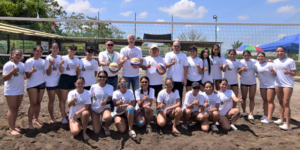
As the face-to-face school year has either started or is about to begin, parents, students and schools all over the country are scrambling to adjust to this new normal that although there was more than two years to prepare for, nobody seems ready in terms of systems or facilities.
Before the pandemic struck, parents like me never thought of questioning the horribly inefficient way we do things. I knew it was inconvenient and wasteful, sending my kids to a private school 14 kilometers from home, but that was how my parents did for us and so I naturally assumed that it was going to be the same way with my kids when my turn to pay the tuition fee came.
As second generation Silaynons with Bacolod-schooled families know by now, we find ways to cope. Trips to and from the city are coordinated and scheduled like clockwork, often involving extended family members. Our kids were taught that waiting or hitching a ride with relatives who were on their way home is part of life. If you don’t want to wait for a ride, then deal with the long commute.
The Silaynon situation is less ideal due to the greater distances involved, but most parents with kids in private schools know the drill as we spend a big chunk of our finite resources on the commute to and from school.
When the COVID-19 pandemic hit and children all over the country were sent back home for more than 2 years, that was when we realized just how much time, gasoline and carbon emissions we have been wasting on the old ways of doing that school bit.
While it isn’t ideal for school-aged-kids to be educated from home, the distance and effort required to bring kids to campus has suddenly become a factor for parents as they make preparations and arrangements to go back to school in a post-pandemic world. The combination of the pandemic lifestyle adjustments and the currently atrocious price of fuel is making some of us reconsider our long-held assumptions when it comes to sending our kids to school.
This has become a big issue for me because our home is literally walking distance to a public school, a private school and even a college. I shouldn’t be coordinating with my usual suspects in terms of transportation options in order to get our kids to and from school. The past few weeks have made me wonder what is it about the education system that makes me send my kids to a private school two cities away.
In an ideal world, our public education system would be decent and private schools only a luxury. We should be closer to this world by now, considering that public school teachers are getting paid better than their private school counterparts, but I guess our Department of Education simply isn’t headed by people live, eat and breathe education. With current officials’ priorities only on the useless ROTC, it would seem that private education will continue to be a necessity for many Filipinos.
If you come to think of it, even in first world and developed countries, education can still be inconsistent among school districts. Maybe our problem is that ours is just consistently bad. But if our public school system could only provide quality education, my kids could just walk to school.
Aside from providing quality public education, wouldn’t it be nice also if local governments can improve their school districting game so we don’t have to consume so much unnecessary gas and cause traffic. I know that our towns and cities are notoriously unwalkable and unfriendly towards bicycles, especially school-aged kids, but shouldn’t that be a long term goal for local leaders?
On the issue of private schools being inaccessible, the pandemic should also make school administrators rethink their campus and consider decentralization. What if the main campus is only where the facilities like laboratories, libraries, gymnasium, meeting rooms and are housed, but the classrooms are spread out in “districts” to make it easier for students to go to school without having to spend so much on non-renewable resources? Smaller classroom buildings that are accessible by walking, biking or short commutes may make more sense in a world where we are all trying to go as green as possible. Bus services taking the learners from those nodes to the hubs when they need to go will mean less cars on the road.
Anyway, I’m just spit balling here because I’m now faced with the reality of getting my kids to and from school every day, starting in a few weeks from now. Thinking about the time, fuel, money and carbon emissions we are all going to spend so our kids can be educating is already making me nauseous. Maybe one day, someone will dedicate a few more brain cells into a more comprehensive look at our ancient educational system.*







